Sparkle and Shine With Our Diamond Necklaces are more than just precious stones; they are timeless symbols of elegance, luxury, and eternal beauty. A diamond necklace can elevate any outfit, making it an essential piece in any jewelry collection. This article explores the allure of diamond necklaces, guides you in selecting the perfect one, and provides tips for maintaining their radiant shine.
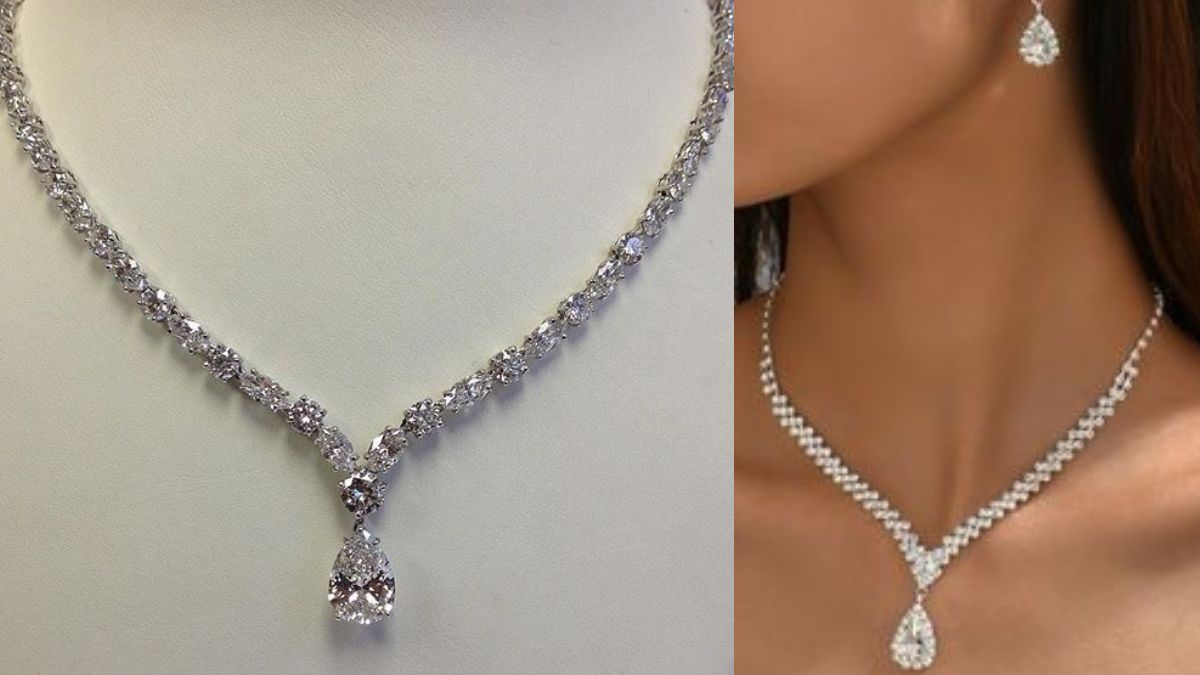
1. The Timeless Beauty of Diamond Necklaces
Diamond necklaces are coveted for their unmatched brilliance and ability to complement any style. From classic solitaires to intricate statement pieces, a diamond necklace adds a touch of sophistication and glamour to any ensemble. The enduring appeal of diamonds ensures that these necklaces remain cherished heirlooms, passed down through generations.
2. Types of Diamond Necklaces
Understanding the different styles of diamond necklaces can help you find the perfect match for your taste and occasion. Here are some popular types:
- Solitaire Pendants: Simple yet elegant, solitaire pendants feature a single diamond that takes center stage. They are perfect for everyday wear and make a timeless statement.
- Diamond Chokers: Worn close to the neck, diamond chokers offer a chic and contemporary look. They are ideal for adding a touch of glamour to formal attire.
- Tennis Necklaces: Featuring a continuous line of diamonds, tennis necklaces exude luxury and sophistication. They are perfect for special occasions and red-carpet events.
- Diamond Station Necklaces: These necklaces feature diamonds spaced along a chain, offering a delicate and understated elegance. They are versatile and suitable for both casual and formal settings.
- Halo Necklaces: Surrounding the center diamond with a halo of smaller diamonds, these necklaces create an illusion of larger size and added brilliance.
3. Understanding the 4Cs of Diamonds
When choosing a diamond necklace, it’s essential to understand the 4Cs: cut, color, clarity, and carat weight. These factors determine the quality and value of the diamond:
- Cut: The cut of a diamond affects its brilliance and sparkle. A well-cut diamond reflects light beautifully, creating a dazzling effect.
- Color: Diamonds are graded on a color scale from D (colorless) to Z (light yellow or brown). Colorless diamonds are the most valuable and sought after.
- Clarity: Clarity refers to the presence of internal or external flaws, known as inclusions and blemishes. Diamonds with fewer inclusions are more valuable.
- Carat Weight: Carat weight measures the size of the diamond. Larger diamonds are rarer and more valuable, but a well-cut smaller diamond can also be stunning.
4. Choosing the Right Necklace Length
The length of a diamond necklace can significantly impact its appearance and suitability for different necklines. Here are some common lengths to consider:
- Choker (14-16 inches): Worn close to the neck, chokers are ideal for open necklines and evening wear.
- Princess (18 inches): This versatile length falls just below the collarbone and complements most necklines, making it suitable for both casual and formal outfits.
- Matinee (20-24 inches): Falling to the top of the bust, matinee-length necklaces are perfect for business and casual wear.
- Opera (28-36 inches): Worn as a single strand or doubled for a layered look, opera-length necklaces add drama and elegance to formal attire.
- Rope (36 inches and longer): Rope-length necklaces offer versatility and can be styled in various ways, including knotting or layering.
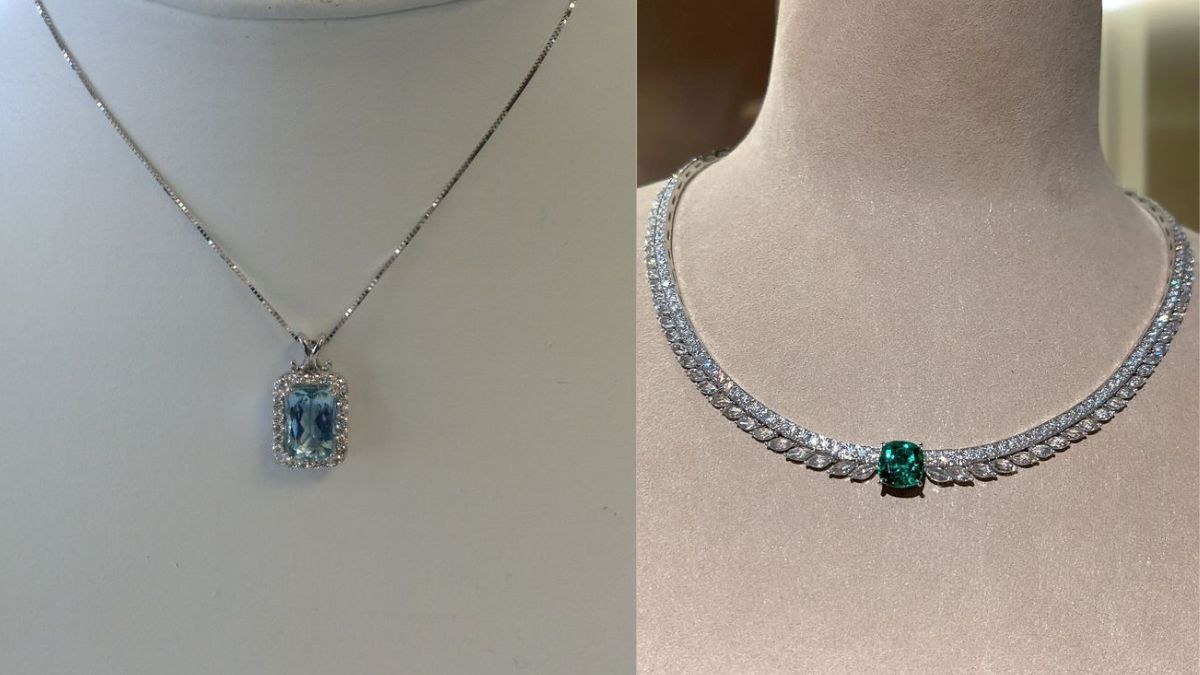
5. Selecting the Perfect Setting
The setting of a diamond necklace affects both its appearance and security. Here are some common settings to consider:
- Prong Setting: Prongs hold the diamond in place while allowing maximum light exposure for enhanced brilliance. This classic setting is ideal for solitaires and pendants.
- Bezel Setting: The diamond is encircled by a metal rim, providing a secure hold and a sleek, modern look. Bezel settings are perfect for active lifestyles.
- Pavé Setting: Small diamonds are set closely together, creating a continuous sparkle. Pavé settings add a luxurious touch to any necklace.
- Channel Setting: Diamonds are set between two metal strips, offering a smooth and elegant appearance. Channel settings are often used in tennis necklaces.
6. Metals for Diamond Necklaces
The choice of metal can influence the overall look and style of a diamond necklace. Here are some popular options:
- White Gold: A timeless and elegant choice, white gold complements the sparkle of diamonds and offers a modern look.
- Yellow Gold: Classic and warm, yellow gold provides a traditional and luxurious appearance.
- Rose Gold: With its romantic and feminine hue, rose gold adds a unique touch to diamond necklaces.
- Platinum: Known for its durability and hypoallergenic properties, platinum is a premium choice that enhances the brilliance of diamonds.
7. Caring for Your Diamond Necklace
Proper care is essential to maintain the beauty and sparkle of your diamond necklace. Here are some tips:
- Regular Cleaning: Clean your necklace with a soft brush and a mild soap solution to remove dirt and oil. Rinse thoroughly and dry with a soft cloth.
- Professional Maintenance: Have your necklace inspected and cleaned by a professional jeweler annually to ensure the diamonds are secure and the setting is in good condition.
- Storage: Store your necklace in a soft pouch or lined jewelry box to prevent scratches and tangling with other jewelry.
8. The Significance of Diamond Necklaces
Diamond necklaces hold a special place in the hearts of those who wear them. They often symbolize love, commitment, and achievement. Whether given as a gift or purchased for oneself, a diamond necklace is a meaningful and cherished possession.
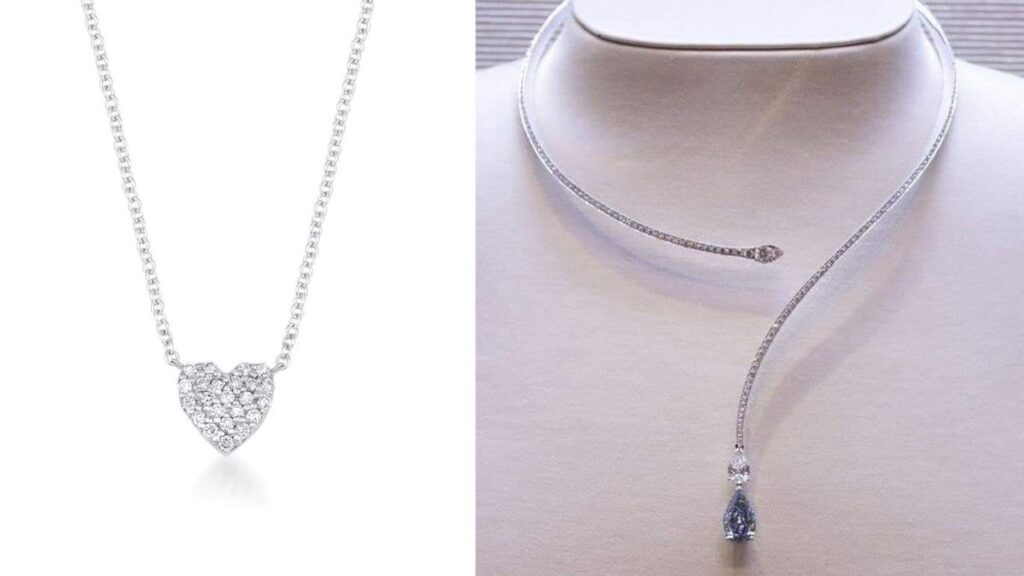
9. Diamond Necklaces for Every Occasion
Diamond necklaces are versatile enough to be worn for various occasions:
- Everyday Elegance: A simple solitaire pendant or diamond station necklace adds a touch of elegance to everyday outfits.
- Business Chic: A matinee-length necklace with a modest design enhances professional attire without being overpowering.
- Evening Glamour: Opt for a tennis necklace or a statement piece for formal events and special occasions.
- Bridal Beauty: Diamond necklaces are a popular choice for brides, adding sparkle and sophistication to wedding attire.
10. The Value of Customization
Customized diamond necklaces offer a personal touch and allow you to create a unique piece that reflects your style and preferences. Many jewelers offer customization options, such as selecting the diamond, setting, metal, and length. Personalized necklaces also make thoughtful and meaningful gifts.
11. Budget Considerations
When purchasing a diamond necklace, it’s important to set a budget and prioritize the aspects that matter most to you, such as diamond quality or design complexity. Consider these tips:
- Choose Smaller Diamonds: Opting for smaller diamonds in a well-designed setting can create a stunning effect while staying within budget.
- Consider Lab-Grown Diamonds: Lab-grown diamonds offer the same brilliance and durability as natural diamonds but at a lower cost.
- Focus on Cut and Setting: Prioritize a high-quality cut and an appealing setting, as these factors significantly impact the necklace’s overall beauty.
12. Sustainable and Ethical Choices
As awareness of ethical and environmental concerns grows, many consumers seek sustainable and conflict-free diamond options. Consider these factors when choosing a diamond necklace:
- Conflict-Free Diamonds: Ensure that the diamonds are sourced ethically and free from conflict. Look for certifications such as the Kimberley Process to guarantee responsible sourcing.
- Lab-Grown Diamonds: These diamonds are created in controlled environments and offer an eco-friendly alternative to mined diamonds.
- Eco-Friendly Materials: Choose necklaces made with recycled metals and environmentally friendly practices.
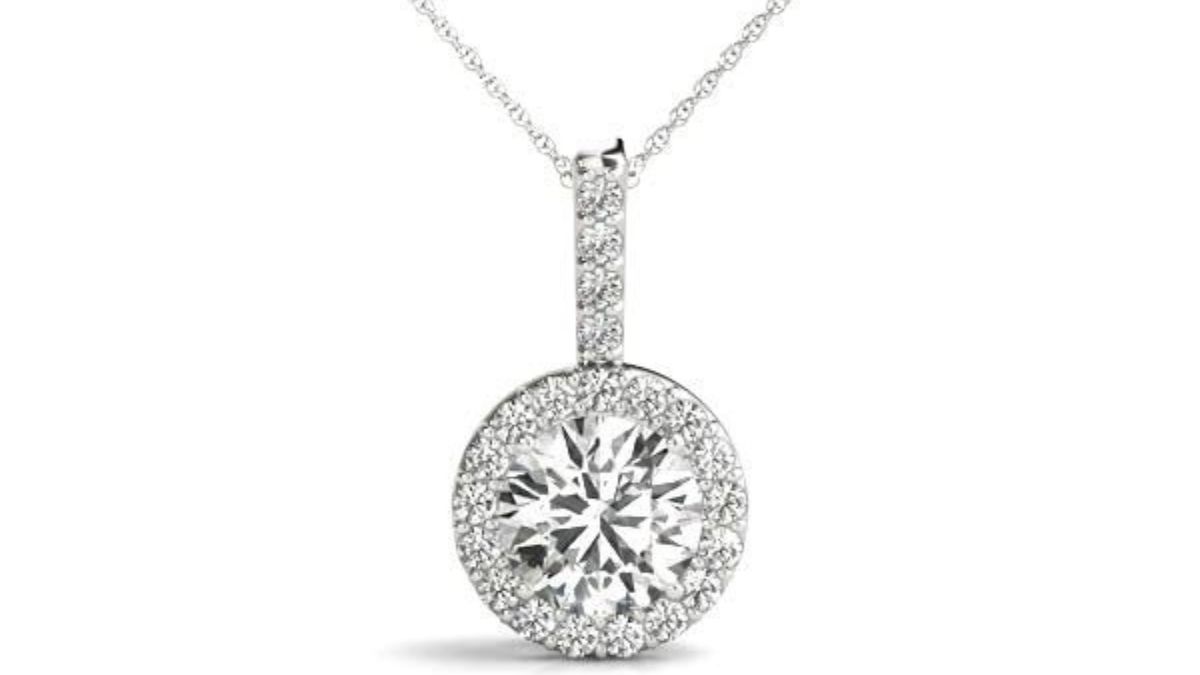
Conclusion
A diamond necklace is a timeless and exquisite piece of jewelry that adds elegance and sophistication to any outfit. By understanding the different styles, settings, and materials, you can find the perfect diamond necklace that matches your taste and lifestyle. Proper care and maintenance ensure that your necklace remains a sparkling treasure for years to come. Embrace the beauty and brilliance of diamond necklaces and let them enhance your unique style.
FAQs
Q1: How do I clean my diamond necklace at home?
A1: Clean your diamond necklace with a soft brush and a mild soap solution. Gently scrub the diamonds and rinse thoroughly with warm water. Dry with a soft, lint-free cloth.
Q2: Can I wear a diamond necklace every day?
A2: Yes, you can wear a diamond necklace every day, especially if it’s a simple design like a solitaire pendant. Ensure it is properly secured and avoid exposing it to harsh chemicals or physical activities that could damage it.
Q3: How do I determine the quality of a diamond necklace?
A3: Assess the diamond’s quality using the 4Cs: cut, color, clarity, and carat weight. Additionally, consider the craftsmanship of the setting and the quality of the metal used.
Q4: Are lab-grown diamonds a good option for necklaces?
A4: Yes, lab-grown diamonds are an excellent option. They offer the same brilliance and durability as natural diamonds and are often more affordable and environmentally friendly.
Q5: What is the best metal for a diamond necklace?
A5: The best metal depends on personal preference and style. White gold and platinum are popular for their modern look, while yellow gold offers a classic appearance. Rose gold adds a unique and romantic touch.
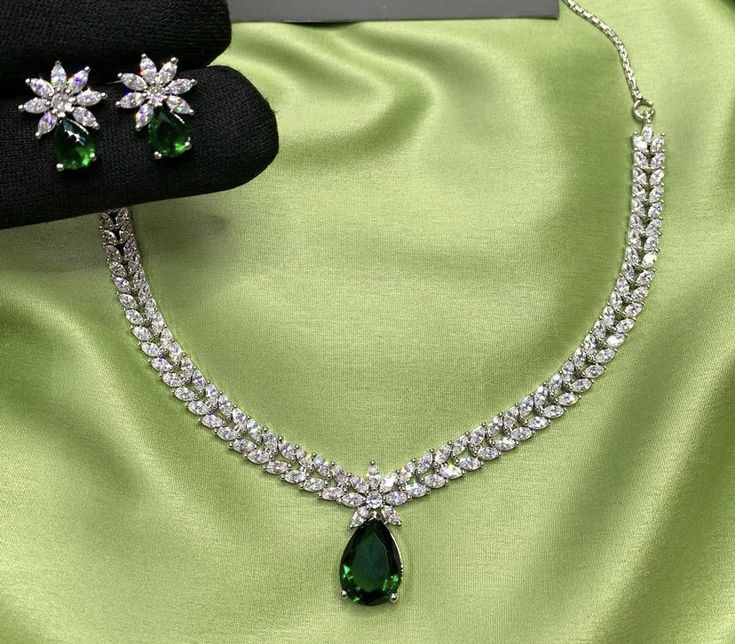
Leave a Reply